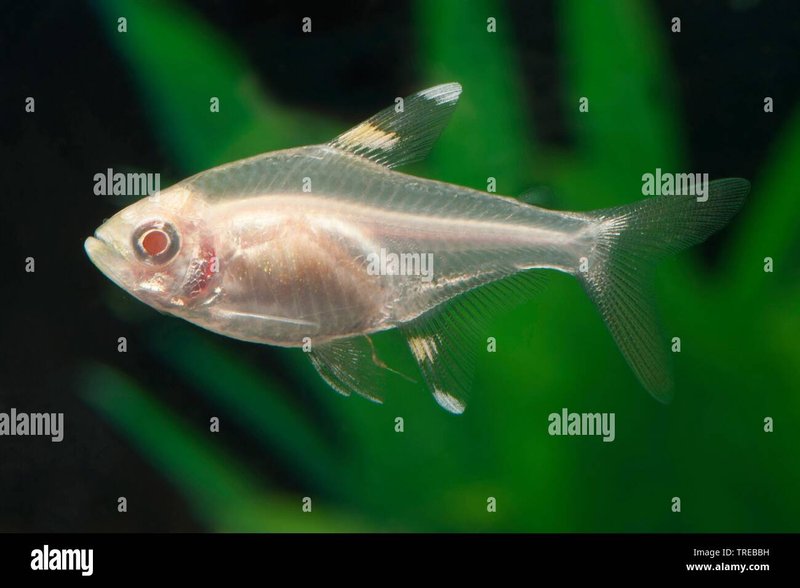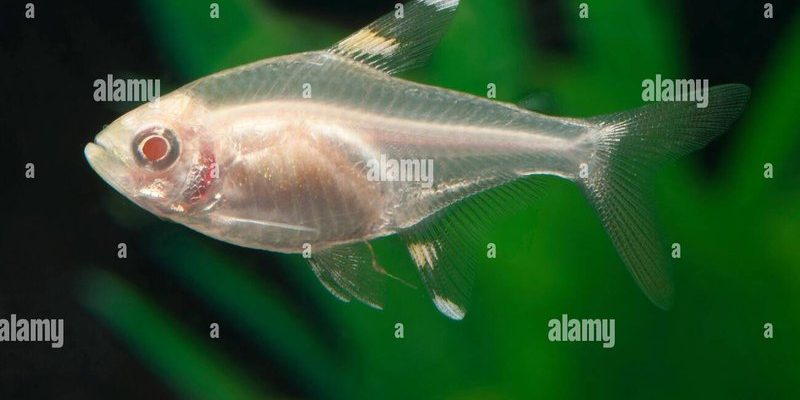
Breeding X-Ray Tetras requires attention to detail, a good environment, and a little patience. Setting the stage for their romance is key. Think of it as creating a cozy date night for your fish. You want to make sure they feel safe, happy, and ready to start a family. So let’s dive in and explore how to successfully breed these fascinating fish!
Understanding the X-Ray Tetra
The X-Ray Tetra, or *Pristella maxillaris*, is a popular freshwater fish that’s often found in home aquariums. They’re small, usually growing to about two inches long, and are really social creatures that thrive in groups. Their unique transparent bodies allow you to see their internal organs, making them quite the conversation starter.
These tetras are native to the rivers of South America, specifically the Rio Orinoco and the Rio Negro regions in Venezuela and Brazil. They enjoy living in schools, which helps them feel secure and reduces stress. If you’re considering breeding them, understanding their natural habitat can help mimic the conditions they need. Think of it as recreating their home environment in your tank, complete with the right plants, light, and water conditions.
Setting up a breeding tank can be an exciting project. You’ll want to ensure that the environment is clean, with plenty of hiding spots and plants for the fry. This not only makes them feel comfortable but also provides essential cover for the little ones when they hatch. Creating a nurturing space is the first step in the breeding process.
Creating the Right Environment
To successfully breed X-Ray Tetras, you’ll need a breeding tank that mirrors their natural environment. The ideal setup is a 10 to 20-gallon tank with soft, slightly acidic water—around a pH of 6.0 to 7.0. You can use a sponge filter to keep the water clean without creating too much current, which can stress the fish.
Here’s what to include in your breeding tank:
- Plants: Use live plants like Java moss or floating plants to provide cover. These will help the fry hide from adults and give them a place to thrive.
- Heater: Maintain a temperature between 74°F to 78°F to encourage breeding. Fish are more likely to spawn in warmer water.
- Lighting: A soft light cycle helps mimic natural conditions, so consider using a low-wattage light for about 12 hours a day.
Remember, the more comfortable the environment, the more likely your tetras will want to breed. It’s about setting the mood—much like creating a peaceful atmosphere for a dinner party!
Choosing the Right Pair
Not just any X-Ray Tetra can breed successfully. You’ll want to select a healthy male and female. Male tetras are generally slimmer, with a more pronounced, colorful dorsal fin, while females are rounder, especially when ready to spawn.
You might wonder how to identify a spawning-ready female. Look for a full belly, which indicates she’s carrying eggs. It’s best to introduce a group of 6 to 8 fish, as this helps reduce stress and allows natural pairing. The males will often compete for the attention of the females, making it easier for the strongest pairs to emerge.
After you notice that the females are plump with eggs and males are showing off their colors, it’s time to set your breeding pair in the breeding tank. Let them acclimate for a day or two, creating a relaxed vibe before the main event.
The Breeding Process
Breeding X-Ray Tetras typically involves a dance of sorts, with males flirting and showing off to attract females. Once a female is receptive, she will start to swim close to the male, and this is your cue that things are about to get exciting!
Here’s what to expect during breeding:
1. Spawning: The male will chase the female around the tank, and when she’s ready, they’ll weave in between the plants as she releases eggs. It can be quite a spectacle!
2. Egg Laying: Each female can lay up to 100 eggs at a time, and they usually stick to plants or the substrate. The males will fertilize them shortly after.
3. Fry Care: Once the eggs are laid, it’s essential to remove the adult fish. X-Ray Tetras are known to eat their own eggs, so putting them back in the main tank is crucial for the safety of the fry.
Most of the eggs will hatch in about 24 to 36 hours, depending on the temperature and conditions.
Caring for the Fry
Once the eggs hatch, you’ll be greeted with tiny fry swimming around. At this point, the real work begins. The fry are so small and vulnerable, so proper care is essential for their survival.
Here’s how to keep them safe and help them grow:
- Feeding: Start by giving them infusoria or finely crushed flakes designed for fry to ensure they get the nutrients they need.
- Water Quality: Keep the water clean by changing 10% to 15% of the water daily. This helps prevent any harmful buildup that could harm the fry.
- Space: As they grow, it’s important to provide enough space. When they’re about half an inch, you can transfer them to a larger tank to prevent overcrowding.
It might be a little overwhelming at first, but with the right approach, you’ll soon learn the ropes of fry care. Watching them grow is definitely rewarding!
Common Problems and Troubleshooting
Even with the best intentions and preparations, breeding X-Ray Tetras can sometimes come with challenges. You might run into a few hiccups along the way.
Here are some common issues and how to address them:
1. Egg Eating: If the adults are still in the breeding tank after spawning, they might devour their eggs. Keeping them separate is crucial in preventing this.
2. Poor Hatching Rates: If you notice that many eggs aren’t hatching, check the temperature and water quality. Fluctuations can impact embryo development, so consistency is key.
3. Fry Health Issues: As the fry grow, keep an eye out for any signs of illness or stunted growth. Make sure to maintain a clean environment and provide proper nutrition to avoid these problems.
If you run into issues, don’t get discouraged. It’s all part of the learning process.
Breeding X-Ray Tetras can be an incredibly fulfilling endeavor. With their vibrant personalities and stunning looks, it’s easy to see why many fish enthusiasts love them. By creating the right environment, choosing the right pair, and providing proper care for the fry, you’ll be well on your way to a successful breeding experience.
Remember, patience is key. Not every breeding attempt will lead to a successful batch of fry, but each experience is an opportunity to learn and grow as a fish keeper. So, gather your supplies, roll up your sleeves, and enjoy the wonderful journey of breeding X-Ray Tetras!

